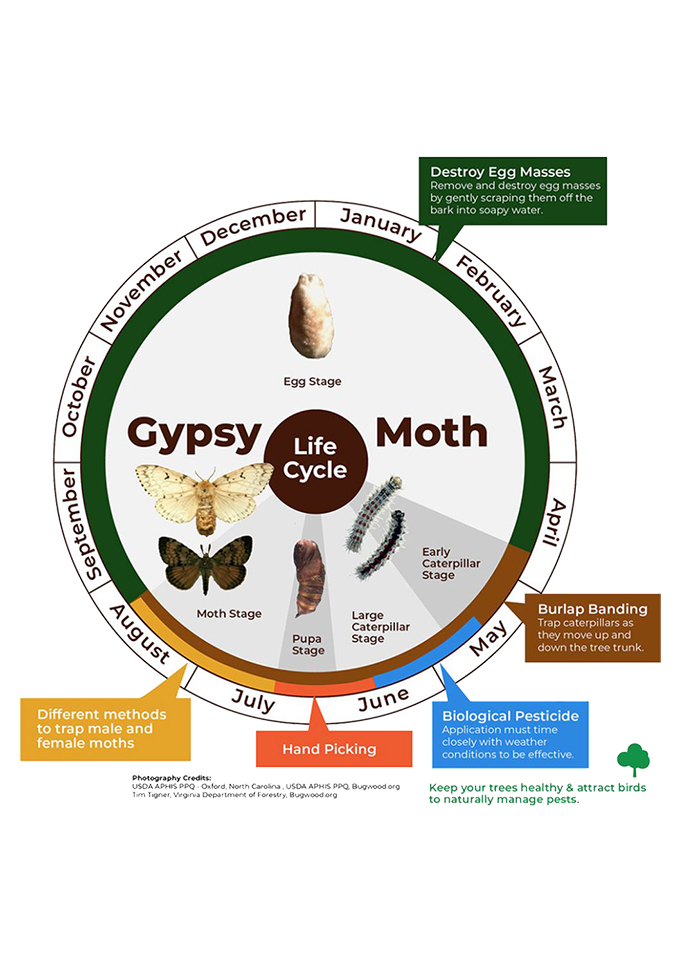What Are Gypsy Moths?
The name "Gypsy Moth" comes from its ability to easily travel from place to place by attaching eggs to variuos objects. This is evident in the shear numbers of Gypsy Moths that have invaded Ontario since the 1970's when they first appeared. The moths are found mainly in Ontario, Quebec, and the Martimes but have also been found in every Province throughout Canada.
Should I be Worried?
The Gypsy Moths themselves are not of particular concern, although they can be annoying! It's the larve (caterpillars) that are of greatest concern as one single Gypsy Moth Caterpillar can eat, on average, up to one square metre of leaves. They are a concern to trees but also to wildlife that feed on nuts and other droppings from the trees. Deer for example feed on acorns for nutrition to survive Ontario's harsh winters and, without this, may perish.
Getting Rid of Gypsy Moths:
The Gypsy Moth Caterpillar spreads easily and can be carried by the wind for a distance of up to one kilometre. The egg masses however, are of greatest concern. They can easily hide on ojects such as vehicles, tents, trailers, or even lawn chairs to infest new areas. In fact, the original Gypsy Moths appear to have travelled to Canada on Russian freighters 50 years ago.
In order to control Gypsy Moths we utilize selective biological insecticides that control caterpillars. These insecticides cause the caterpillar to stop feeding and do not affect other insects, mammals, birds or fish.



